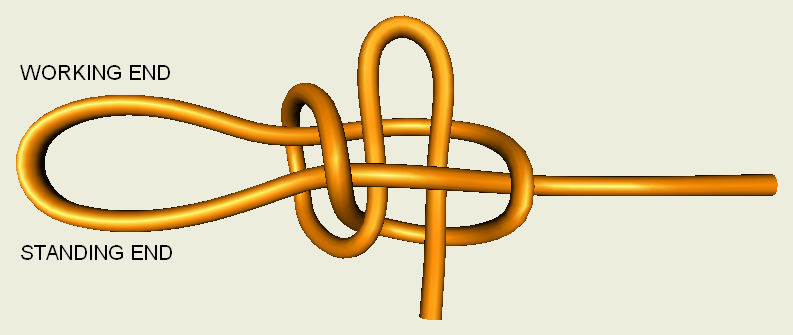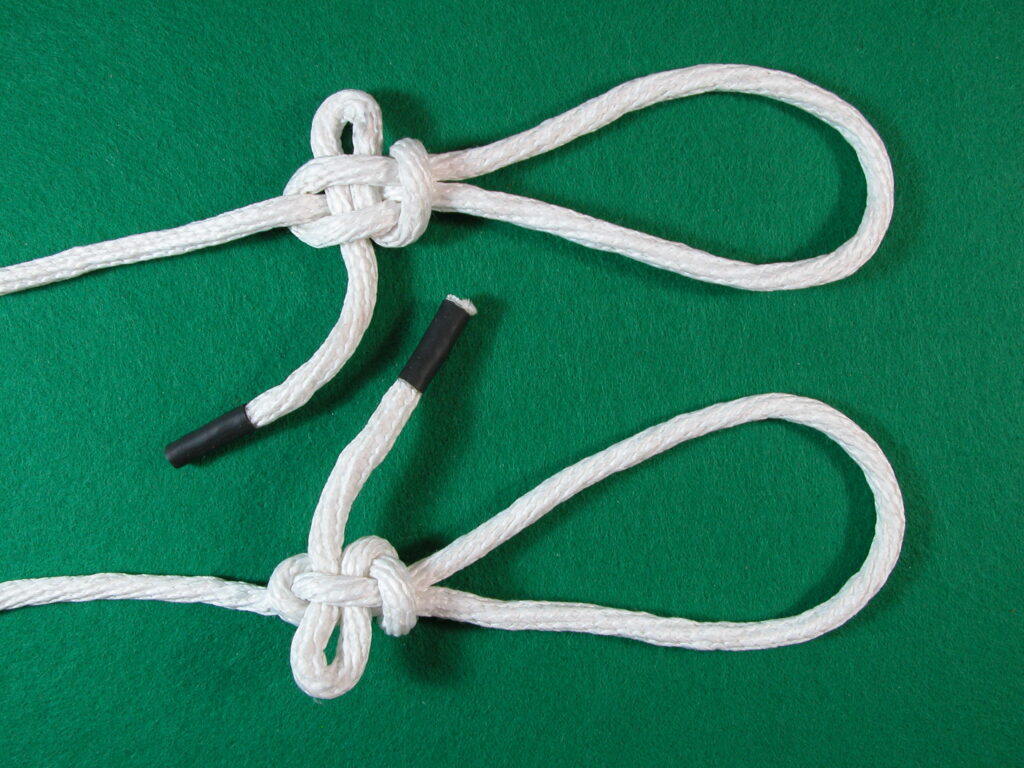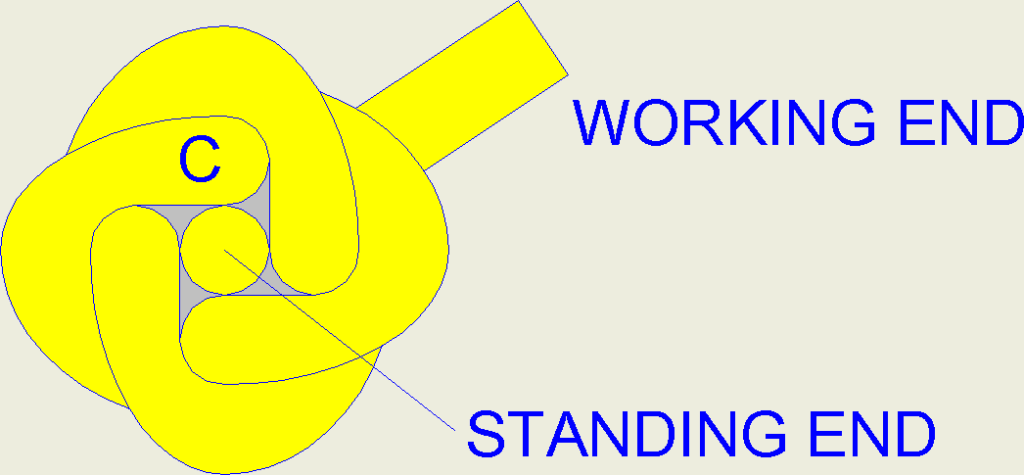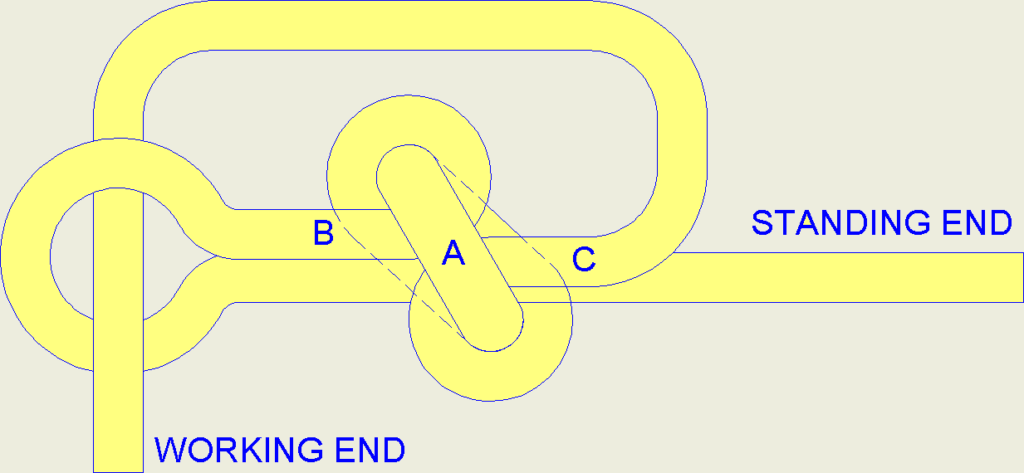A particularly good knot for tying down tarpaulins is the slipped locking loop. This is an adjustable self-locking loop knot that is easily untied, even when frozen in winter. It is described on page 137 of John Shaw’s Directory of Knots.

Tie a stopper knot (either Ashley’s or a quad stopper) in one end of a rope and pass it through a tarp grommet. Take the other end through or around the tie down point forming a loop. Pull on the working end to make the rope taught. Form the main loop and slip loop, as shown above, near the tie down point. Snug up the knot enough that it will just barely slide on the standing end. While pulling on the working end to tighten the rope to the tarp, slide the knot away from the tie down until it snugs hard against the working end. The main loop will pull the standing end around the slip loop and lock the knot in place. Load tension from the tarp end will lock it tighter.

To remove the tie simply pull out the slip loop and the knot will fall apart. This feature is very useful for applications like covering car windows in the winter where freezing rain and snow-melt-freezes will completely lock up ordinary knots making them impossible to untie.
Please leave comments using the post in my comments category.




